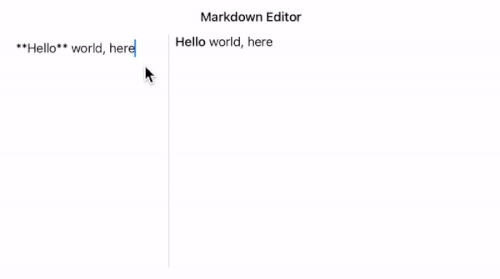Markdown in SwiftUI Text
Reading time: 1 min
This recipe shows how to use markdown in SwiftUI Text views.
The end result looks like this:

This code works starting with SwiftUI 3 (iOS 15, macOS 12). If you're interested in using attributed strings on SwiftUI 1 and 2, check out Text with NSAttributedString recipe or Hyperlinks with Text recipe.
OK, so there's no big secret here, Text will automatically render any markdown you pass to it:
Text("Yep, this **actually** works!")Now, if you don't want to use markdown, create your view with Text(verbatim:):
Text(verbatim: "This **will not** render markdown.")If you need to dynamically update the content of your markdown-rendering Text, you have to utilize AttributedString. Here's the code for our little markdown editor that you saw in action at the beginning of the article:
@State private var markdownText: String = "**Hello** world"
var markdown: AttributedString {
(try? AttributedString(markdown: markdownText)) ?? AttributedString()
}
var body: some View {
VStack {
Text("**Markdown Editor**") // yep, also native markdown
HStack(alignment: .top) {
TextEditor(text: $markdownText)
.disableAutocorrection(true)
.autocapitalization(.none)
.frame(width: 200)
Divider()
Text(markdown)
.lineLimit(nil)
.multilineTextAlignment(.leading)
Spacer()
}
}.padding()
}Lastly, SwiftUI's markdown isn't the complete markdown you're used to and can be used for basic formatting: More specifically, it supports:
**bold text** *italics* ~~strikethrough~~ `inline code` [Hyperlinks](https://hyperlink.com)
To see how to make hyperlinks in Text work, check out this recipe.